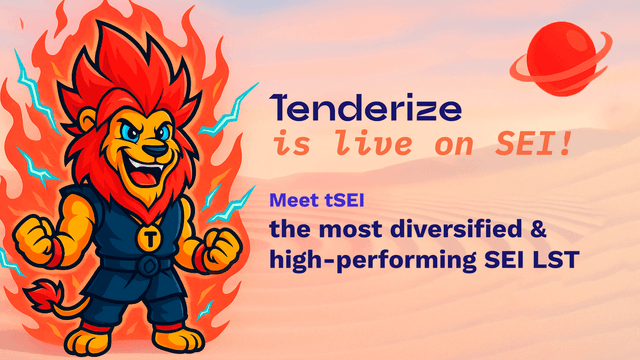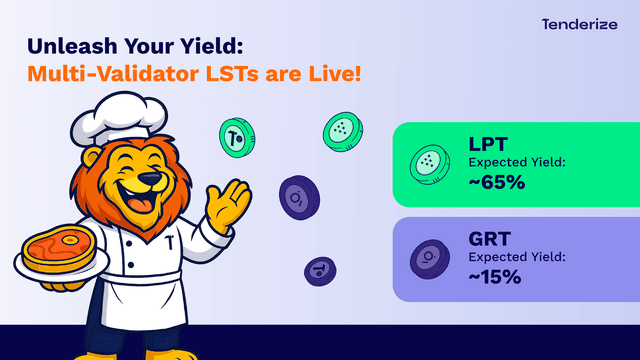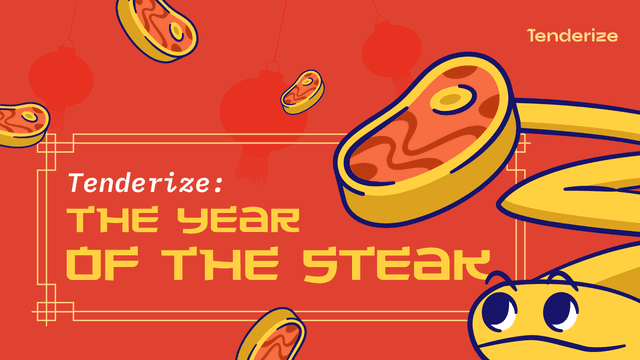Why is liquid staking important?
Jun 17, 2022 • 3 min read

You’ve heard about staking, but what about liquid staking? Tenderize is pioneering liquid staking in the intersection of Web3 and DeFi to offer protocols and investors a new way of yield earning. Discover what liquid staking is and how Tenderize is approaching this concept to bring more diversification, capital efficiency, and opportunities to a crypto ecosystem.
What staking means?
Staking consists of allocating (aka locking) tokens into a protocol for a determined period to gain rewards (yield), contributing to that network. With staking, investors help the network by confirming transactions. In return, the protocol distributes rewards (e.g., new tokens) to investors.
If you believe in the positive appreciation of a token in the long term, staking it might be a great way to earn additional yield without extra work.
Think of staking as a supercharged crypto interest-earning account. Instead of gaining 0.1% in your bank, several exchanges, networks, and protocols offer 5% or 10% annual interest from staking. For Proof-of-Stake (PoS) networks, staking is essential for their livelihood, leading protocols to offer attractive rewards. Ethereum is one of the networks moving to a PoS consensus under ETH 2.0, attracting more investors with the change. However, many popular PoS-based protocols, from Solana to Cardano, already offer staking.
For risk lovers, new DeFi projects can offer staking rewards of over 20,000 or 30,000% to attract users, but the risks also increase. Newer trends like rebasing DAOs led the concept of staking rewards to new highs with yields that could go to hundreds of millions in percentages.
Sounds good on paper, but what about the downsides of staking?
In crypto, like with any financial product, there’s a risk associated with it. The higher the risk, the higher the rewards. Extraordinarily high yields come with very high risks, including rugs, potential asset depreciation from high selling pressure, drastic changes in APRs, etc.
The major risk associated with staking is the potential declining value of the underlying token, the lack of flexibility/use-cases of your funds, and how the project generates a high yield.
In DeFi, many projects inflate their yields to attract new users, leading to abnormal levels of token emissions, devaluing it. This phenomenon leads to many investors selling the tokens once the lock-up period of the staking ends, resulting in a downfall in the token price. In that scenario, even though you’re gaining new tokens, your return will become worthless once you can claim the rewards. Further, while the staked token price is going down, you can’t move your assets into other investments due to lock-up periods.
Nevertheless, the underlying issue causing many of these problems is the origin of the yield offered by protocols. In those cases, real metrics such as adoption and growth are not reflected in the token, leading to this problem.
Tenderize has a solution.
Introducing liquid staking through crypto derivatives
With liquid staking, you can have total flexibility over your original tokens while you’re staking them. How? By introducing crypto derivatives into the picture.
For example, with Tenderize, you can stake your tokens (MATIC, LPT) with a 0-day lock-up period and earn attractive yields. This is possible because when you stake, Tenderize converts your original tokens on a 1:1 basis to derivatives called TenderTokens. Those TenderTokens have the same value as your original tokens but offer more use-cases.
Long lock-up periods with liquid staking are gone, giving you complete freedom over your original tokens.
Web 3 meets sustainable token growth and capital efficiency
The Tenderize protocol brings capital diversification and efficiency to participants of the Web 3 economy. Until now, there were technical and investment barriers to taking full advantage of the tokenomics of Web 3 and DeFi.
With the Tenderize protocol, users can deposit their Web 3 tokens (MATIC, LPT) to gain attractive yields, have higher flexibility on their assets, and invest in a range of vehicles to earn rewards.
First, you can stake your Web 3 tokens to receive more rewards as TenderTokens. Then, you can go through a complete investment flow, earning extra rewards from farming or through liquidity providing. At any time, you can convert your newly gained TenderTokens back to the original asset with TenderSwap.
Tenderize can offer sustainable yield due to allocating assets to the best-performing nodes under each network. The protocol automatically adjusts allocations in the several token pools due to its elastic supply mechanism and compounds rewards without human intervention.
No more bloated token emissions, locked assets, and lack of use-cases for Web 3 tokens!
Tenderize has solved it. Check the steps to start using Tenderize and join today!
Alpha in your inbox,
Subscribe now!
Subscribe to our newsletter and receive exclusive insights and be the first to know about new releases.
We will never spam you.



